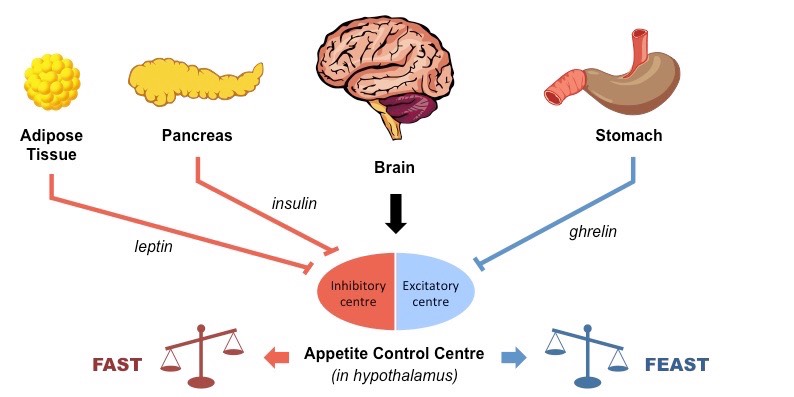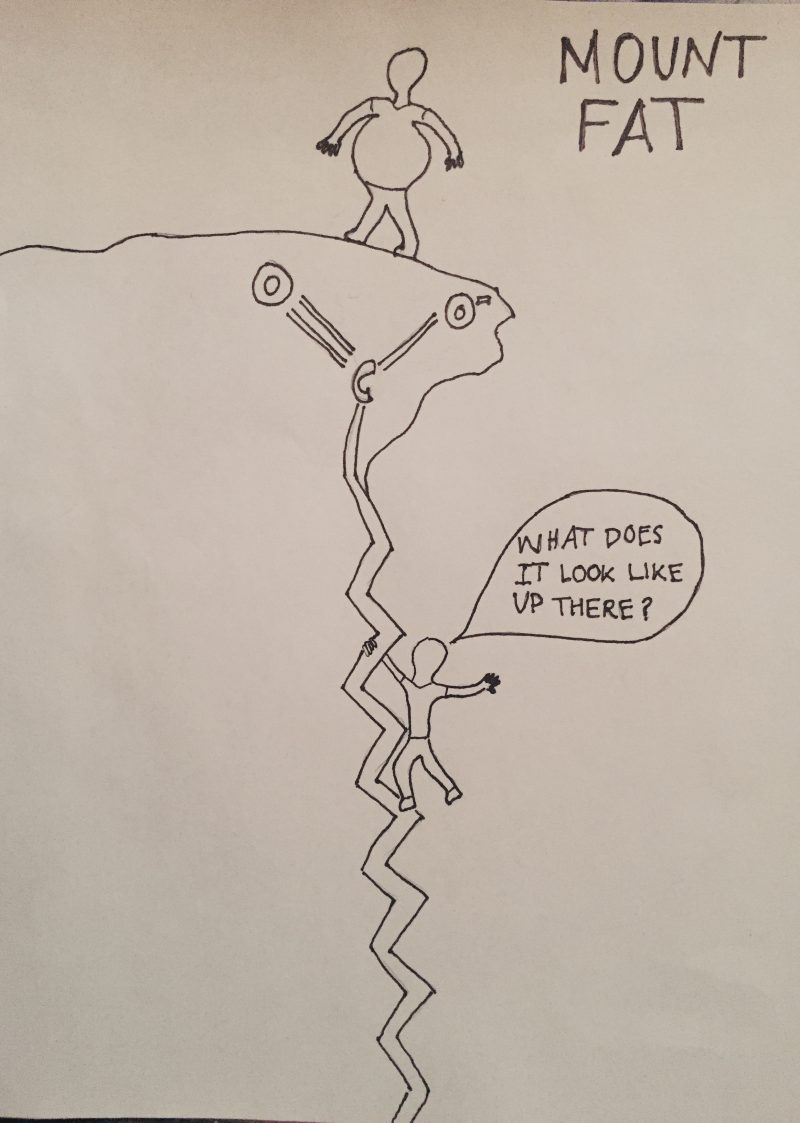Do you ever crave food to the point where you are pretty sure you are addicted? Well, turns out you might actually be addicted to food. Recent studies have connected obesity and overeating to changes that manifest in the brain, specifically linked to energy homeostasis which is the balance of energy in your body. The hypothalamus in your brain is what maintains this homeostasis by regulating feeding behavior and energy expenditure, in other words when you eat and when you exercise is controlled by the hypothalamus. You may be questioning how your brain knows what the rest of your body needs, well this is through insulin and leptin signaling. Insulin and leptin begin signal cascades that lead to the response “stop eating and expend energy.”
Leptin is a hormone produced by adipocytes, fat cells, and binds to receptors in the hypothalamus. The receptor then begins a signal cascade that activates the synthesis of the neuropeptides proopiomelanocortin (POMC) and cocaine and amphetamine regulated transcription (CART). These neuropeptides then lead to the “stop eating and expend energy” response. The leptin signal cascade also results in the inhibition of agouti-related peptide (AgRP) and neuropeptide Y (NPY) which are neuropeptides that signal the “eat now” response. This is great, because it tells your body you’re full. You have enough energy to do life. But there’s a catch! FOXO1 inhibits the action of this signaling cascade leading to the opposite response, “eat more.” To combat this, insulin steps in.
Insulin is a hormone produced in the pancreas, that also binds to receptors in the hypothalamus. Insulin initiates a signal cascade that kicks FOXO1 out of the nucleus so it can’t disrupt the leptin signaling. The figure below shows how leptin and insulin control appetite in the hypothalamus.

If there is a lack of leptin or insulin, POMC and CART will not be synthesized to give the “stop eating and expend energy” response. The figure also shows that ghrelin, produced in the stomach will also induce appetite. AgRP and NPY will be synthesized leading to the “eat now” response. If you haven’t eaten for a while and need some energy this is good. But, if this signal occurs even when you’re not hungry, then you have a problem. This uncoupling of the “eat now” response and the amount of energy one has is key in obesity.
So, how does this signal happen when you don’t need energy? Obesity leads to this disruption of energy signaling in a number of ways. One way is that a high fat diet causes the activation of inflammation in the hypothalamus which elicits a stress response from the endoplasmic reticulum (ER). ER stress leads to leptin and insulin resistance, therefore increasing AgRP and NPY neuropeptides and the “eat now” response. The body still produces leptin and insulin, but now the hypothalamus can’t send out the correct signal. This leads to overeating because an individual will continue to eat after attaining their energy threshold. In mice, the hypothalamus returned to its normal size after three days on a low-fat diet. So, no worries, one meal won’t send you down an uncontrollable food tunnel. However, prolonged high fat diets could lead to the uncoupling of energy need and feeding behavior. Therefore, proper nutrition and portions is key to maintaining a healthy lifestyle.
